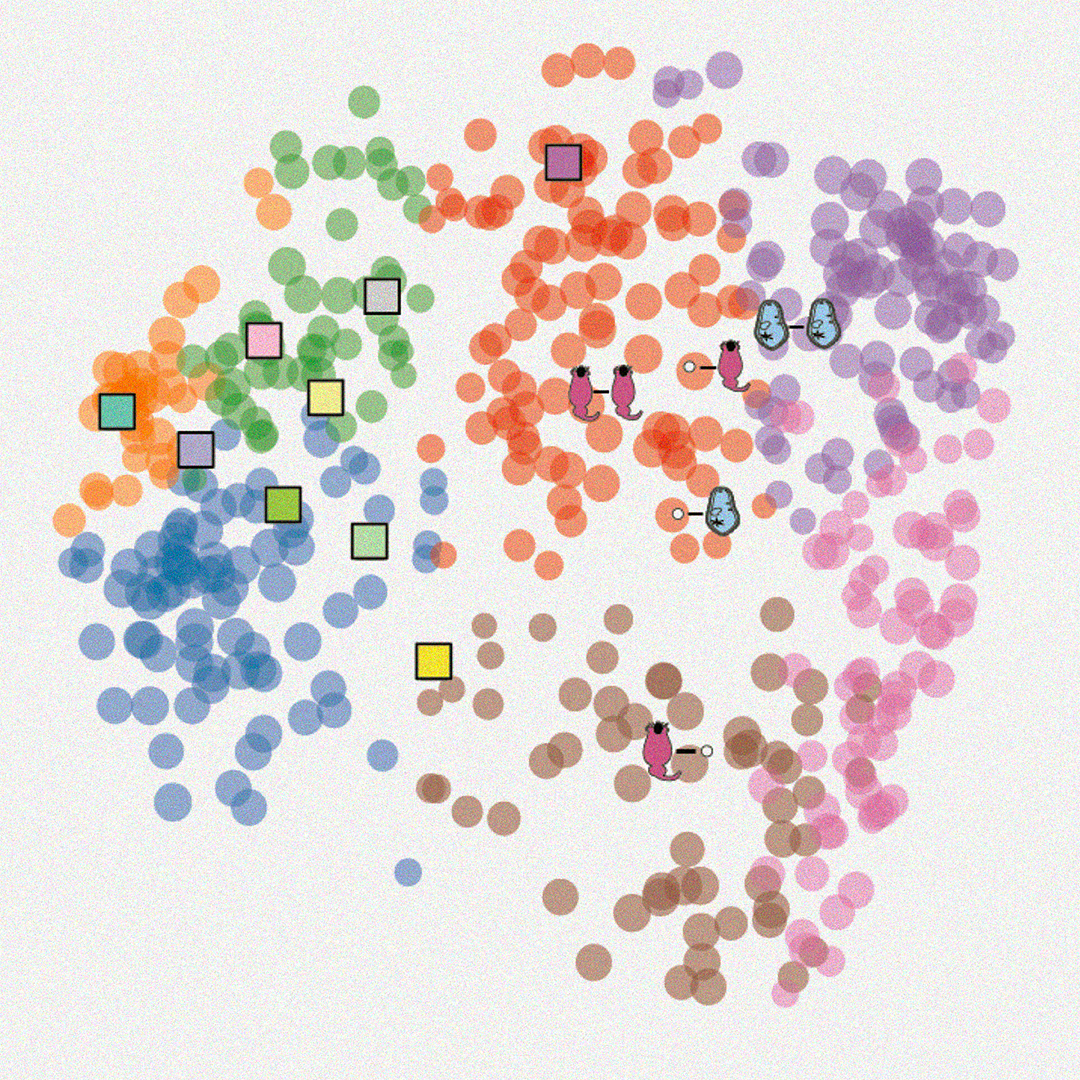The reasons why one animal chooses one path over another, or behaves differently from others, can often seem enigmatic. But a team led by Claire Wyart’s group at the Paris Brain Institute (ICM), in collaboration with Michael Orger’s lab at the Champalimaud Foundation (CF), has shed light on these differences, revealing the dynamic relationship between an animal’s internal states and its surroundings.
Animal Behaviour Across Timescales
Previous studies on animal movement have often focused on specific timescales. For instance, short-term movements—like a quick turn to avoid a predator—are tied to the neural circuits involved in rapid responses to sensory inputs. By contrast, longer timescales reveal behaviours influenced by shifts in internal states or changing goals over hours or days.
What makes this study, published in PNAS, particularly unique is its approach to bridging these scales, capturing a “hierarchy” of behavioural patterns that spans from quick reactions to longer-term strategies. Through this approach, the researchers were able to identify a multiscale structure in zebrafish behaviour, showing how sensory input, previous experience, and individual traits together shape the fish’s navigation choices.
“In earlier research”, notes João Marques, a researcher at CF, “we identified that larval zebrafish perform 13 distinct types of movements, known as ‘swim bouts’, each lasting about 200 milliseconds. While this catalogue of movements was an important step forward, it didn’t explain how zebrafish achieve longer-term goals like finding food or exploring new territories”.
As Marques describes, “Gautam Sridhar and Antonio Costa in Claire Wyart’s lab at ICM reanalysed our dataset using a new computational method that robustly measures variability in behaviour across multiple timescales, and discovered that zebrafish have long-lived navigation strategies that reflect internal states hidden from view. Surprisingly, these behavioural states actually define fish individuality”.
Fish Personalities: Exploration vs. Exploitation
The study uncovered that zebrafish behaviours operate across different timescales, each with its own pattern. At the longest timescale, fish behaviour is defined by how often they change direction, while preferences for changes in speed or for turning left or right emerge at faster timescales. Together, these patterns reveal a trade-off between exploration (seeking new areas) and exploitation (spending more time in familiar, resource-rich areas). Remarkably, individual fish displayed consistent preferences along this spectrum, suggesting unique “personalities” or behavioural types among them.
“Uncovering these hidden internal states explains much of the variability between individual fish”, Marques points out. “This suggests that a similar phenomenon could be happening in the development of personalities in more sophisticated animals, such as humans”.
Through computer-simulated experiments, the researchers found that these behavioural tendencies were well-suited to specific tasks. For example, some fish were more adept at pursuing and capturing prey (exploitation), while others excelled at exploring new territories (exploration).
Experience Impacts Individual Behaviour
“Unlike short timescale behaviours, like swim bouts, these long-term strategies were not strongly influenced by what the fish were doing in the moment”, says Marques. “Instead, they appeared to optimise how the fish explored their environment and were shaped by past experiences, particularly in hunting”.
One of the most striking findings was how prior hunting experience influenced the fish’s long-term strategies. Fish that had been exposed to prey exhibited a strong preference for local exploitation, spending more time in particular areas likely to have food. “Fish learn from prior experience how to better explore the world”, observes Marques. “This learning isn’t just about immediate reactions—it shapes their persistent internal drives and strategies”.
This insight underscores the importance of experience in shaping behaviour, even in simple organisms. It also highlights how internal states can override immediate sensory inputs, leading to consistent individual differences.
Beneath the Surface: Probing the Neural Pathways
The discovery of these hidden internal states opens new avenues for understanding the neural basis of behaviour. “The next steps of this work”, Marques shares, “will be to discover what neural mechanisms give rise to these longer-term strategies and how they develop based on the fish’s prior experience. Understanding this could have broader implications for how personalities and behavioural strategies develop in more complex animals”.
He adds, “Our study shows that even simple creatures like zebrafish have complex internal worlds influenced by their experiences. It's a reminder that there’s still so much to learn about the minds of animals”.
Original PNAS paper here.
Image caption: This image visualises how larval zebrafish, represented by dots, cluster into seven distinct behavioural groups based on their internal states and sensory experiences. Exposure to prey emerges as a major factor shaping these behavioural differences, revealing how experience drives individuality in even the smallest creatures. Credit: Gautam Sridhar
Text by Hedi Young, Science Writer and Content Developer of the Champalimaud Foundation's Communication, Events & Outreach Team.

